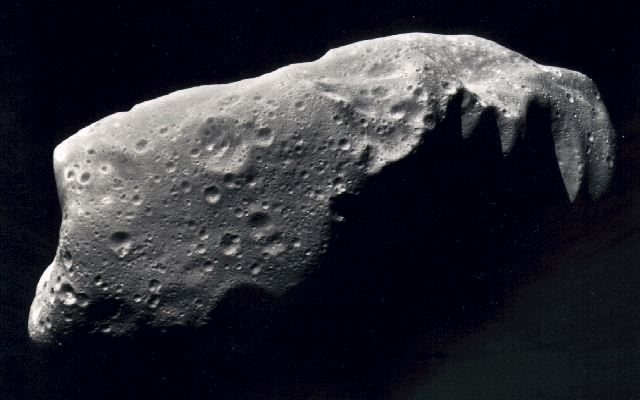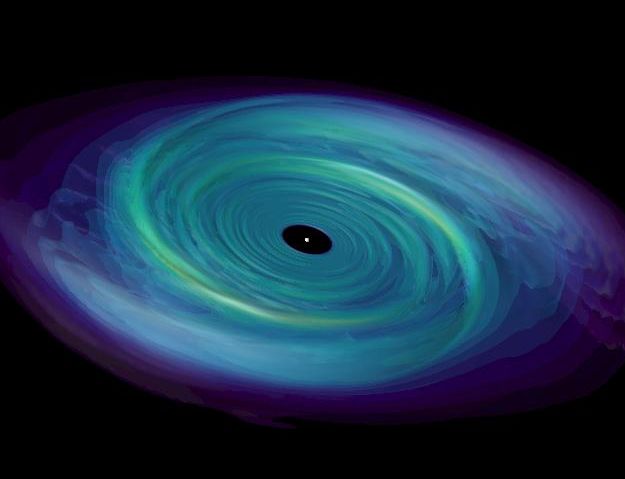- The current theory of the origin of the universe is the Big Bang, which holds that the universe began as an explosion that filled all space.
- When we look at quasars which are 10-15 billion light years away, we are looking 10-15 billion years into the past. Pretty amazing, right?
- Many astronomers believe that quasars are the most distant objects yet detected in the universe. Quasars give off enormous amounts of energy - they can be a trillion times brighter than the Sun!.Quasars might be the ancestors of all galaxies, the violent beginnings of us all.
- Universe consists of 4 percent “normal” atoms (the stuff we are made of), 23percent dark matter, and 73 percent dark energy.
- Expansion of the universe is accelerating.
- Large amount of evidence suggests that the center of our Galaxy harbors amassive black hole.Galactic centre appears to be the location of a black hole of several million solar masses.At the centre of every galaxy contains a massive black hole.
- Each galaxy contains several hundred billion stars, typically about 100 times as manystars as there are people on our planet.
- If theEarth were compressed to thesize of a marble—yet retained itscurrent mass—a velocity greaterthan the speed of light would berequired to escape its marblesizedsurface. Such an objectwould be, effectively, a blackhole.
- All supernova explosion does not lead to black hole.We recognize two types of supernovae. Type I supernovae contain little hydrogen, whereas Type II are rich in that element. Only Type II supernovae are associated with the core collapse of high-mass stars and forms black hole. Type I supernovae are associated with our friends the white dwarfs and Neutron stars.
- A giant is a star with a radius between 10 and 100 times that of the Sun.A supergiant is a star with a radius more than 100 times that of the Sun. Stars of up to 1,000 solar radii are known.A dwarf star has a radius similar to or smaller than the Sun.
- To produce energy, hydrogen atoms in the Sun’s core plow into one another and thereby create helium atoms. In the process, a little mass is converted into energy. That little bit of energy for each collision equates to enormous amounts of energy when we count all of the collisions that occur in the core of the Sun. With this energy source, the Sun is expected to last not 1,000 years or even 100 million years, but about 8 to 10 billion years, typical for a star with the Sun’s mass.
- The Sun doesn’t keep its energy to itself. Rather this energy flows away in the formof electromagnetic radiation and particles. The particles (mostly electrons and protons)don’t move nearly as fast as the radiation, which escapes the surface of the Sunat the speed of light, but they move fast nevertheless—at more than 300 miles persecond (500 km/s). This swiftly moving particle stream we call the solar wind. thegases are sufficiently hot to escape the tremendous gravitational pull of the Sun.Thesurface of Earth is protected from this wind by its magnetosphere, the magnetic field,a kind of “cocoon,” generated by the rotation of charged material in Earth’s moltencore. Similar fields are created around many other planets, which also have moltencore material. The magnetosphere either deflects or captures charged particles from the solar wind.
- Most asteroids are rather small; it is estimated that there are 1 million with diameters greater than 1 km. Some, perhaps 250, have diameters of at least 100 km, while about 30 have diameters of more than 200 km. All of these planets and asteroids are the debris from the formation of the Sun that coalesced slowly through the mutual attraction of gravity.
- Rings around planets are indeed made up of particles, primarily of water ice.
- Ganymede is the largest moon in the solar system (bigger than the planet Mercury) orbiting Jupiter.
- There are 62 moons (at least)for Jupiter, 60 for Saturn, 27 for Uranus, and 13 for Neptune.
-
The Moon is in a synchronous orbit around Earth; that is, it rotates once on its axis every 27.3 days, which is the same time it takes to complete one orbit around Earth. Thus synchronized, we see only one side of the Moon.
- Clearly visible on images produced by Martian probes are runoff and outflow channels, which are believed to be dry riverbeds, evidence that water once flowed as a liquid on Mars.
- The Martian surface contains large amounts of iron oxide, red and rusting that’s why it’s a red planets.
- The rotation period of venus is negative because the rotation of Venus is retrograde; that is, the planet rotates on its axis in the opposite direction from the other planets.The rotation period of Uranus is negative because it is retrograde; like Venus, it rotates on its axis in theopposite direction from the other planets.If at 59 days, Mercury rotates on its axis slowly, Venus is even more sluggish,consuming 243 Earth days to accomplish a single spin. all the planets (terrestrial and jovian) spin counterclockwise—except forVenus, which spins clockwise.
- The gravitational field of a passing star from time to time deflects a comet out of its orbit withinthe Oort Cloud, sending it on a path to the inner solar system.After a short-period or long-period comet is kicked out of its Kuiper Belt or OortCloud home, it assumes its eccentric orbit indefinitely. It can’t go home again.It may then collides with the planets.
- Mercury and venus have 0 moons,earth has 1,mars has 2,Jupiter 62,Saturn 60,Uranus 27 and Neptune has 13 moons.
- Jupiter,the largest planet in the solar system, is over 300 times the mass of Earth, but the Sun is more than a thousand times more massive than Jupiter and about 300,000 times more massive than Earth.
- Astronomical unit (A.U.), which is the average distance between Earth andthe Sun—that is, 149,603,500 kilometers or 92,754,170 miles.
- Pluto, long counted as the ninth planet, wasrecently downgraded from a full-fledged planet to a mere “dwarf planet.”
- Right now, the fastest rockets are capable of achieving 13.333 km/s or 30,000 miles per hour (48,000 km/h),or 262,980,000 miles per year (423,134,820 km/y).Maybe—someday—technology will enable us at leastto approach the speed of light.
- Light travels at extraordinary speeds (about 984,000,000 feet—300,000,000 meters—every second), but thelight that we now see from many objects in the sky left those sources thousands, millions,or even billions of years ago. Rememberthe Andromeda galaxy? We can see it, but the photons of light we just received fromthe galaxy are 2 million years old. Now that’s a long commute!.
- we are not alone in this universe….there may be another planet,revolving a star in the universe,which may contain lives.
- To a distant observer, clocks near a black hole appear to tick more slowly than those further away from the black hole. Due to this effect, known as gravitational time dilation, an object falling into a black hole appears to slow down as it approaches the event horizon, taking an infinite time to reach it. At the same time, all processes on this object slow down, for a fixed outside observer, causing emitted light to appear redder and dimmer, an effect known as gravitational redshift. Eventually, at a point just before it reaches the event horizon, the falling object becomes so dim that it can no longer be seen.On the other hand, an observer falling into a black hole does not notice any of these effects as he crosses the event horizon. According to his own clock, he crosses the event horizon after a finite time without noting any singular behaviour. In particular, he is unable to determine exactly when he crosses it, as it is impossible to determine the location of the event horizon from local observations.
- Centre of the Universe is every where.











